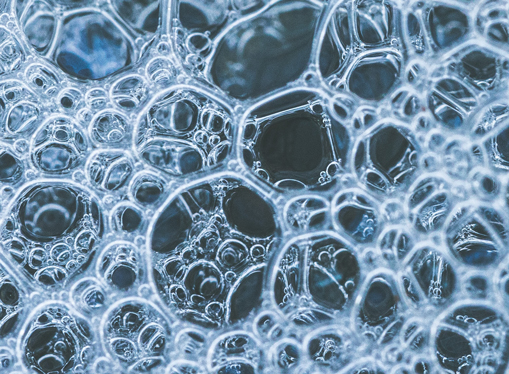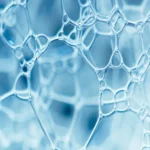فهرست محتوا
- 1 What is Non-Silicone Antifoam?
- 2 Why is Non-Silicone Defoamer Necessary?
- 3 Components of Non-Silicone Antifoams
- 4 Advantages of Using Non-Silicone Defoamer
- 5 Differences Between Silicone and Non-Silicone Antifoams
- 5.1 Environmental Stability:
- 5.2 Cost and Economic Efficiency:
- 5.3 Final Thoughts
- 5.3.1 1. What is non-silicone antifoam and how is it different from silicone antifoam?
- 5.3.2 2. Which industries use non-silicone antifoam?
- 5.3.3 3. What are the advantages of using non-silicone antifoam?
- 5.3.4 4. Is non-silicone antifoam effective at high temperatures?
- 5.3.5 5. How can the appropriate type of non-silicone antifoam be selected?
What is Non-Silicone Antifoam?
Non-silicone antifoams are a category of defoamers used in industrial processes to prevent or reduce foam without the use of silicone. Foam is a major issue in many industries such as chemical, oil and gas, refineries, water treatment, food, pharmaceutical, and paint manufacturing. The presence of foam can lead to problems like reduced efficiency, lower transfer capacity, pressure drop in pipelines, and a negative impact on the quality of final products. Using suitable antifoams can effectively solve these problems.
![]()
Why is Non-Silicone Defoamer Necessary?
Non-silicone defoamers are used in industries where silicone might harm the process or the final product. For example, in the food and pharmaceutical industries, non-silicone antifoams are preferred due to better compliance with hygiene regulations and non-interference with active food or drug ingredients. Also, in paint and coating processes, silicone can cause issues like reduced adhesion or changes in surface properties, so non-silicone antifoams are preferred in such cases.
Components of Non-Silicone Antifoams
Materials used in non-silicone antifoams include fatty alcohols, esters, fatty acids, phosphates, and compounds based on polyethylene glycol (PEG). These components are designed to penetrate the liquid surface, destroy foam bubbles, and prevent new foam formation. Unlike silicone-based antifoams, these non-silicone alternatives are valued for not causing silicone stains and for better compatibility with various substances.
Advantages of Using Non-Silicone Defoamer
Non-silicone antifoams are preferred in many industries due to their unique properties. Key benefits include:
- Compliance with hygiene standards: Due to the absence of silicone, these antifoams are important in food and pharmaceutical industries that require strict hygiene standards.
- Prevention of staining issues: Silicone may cause stains on products, which non-silicone antifoams help avoid.
- Chemical stability: Non-silicone antifoams are generally resistant to various chemical conditions (acids and bases) and can be used in diverse environments.
- Higher biodegradability: Some non-silicone antifoams are more biodegradable than their silicone-based counterparts.
- No filter clogging: In processes requiring precise filtration, non-silicone antifoams are more suitable, as silicone compounds can clog filters.
- Efficiency in varying temperatures: Many non-silicone antifoams perform well at high or low temperatures.
Differences Between Silicone and Non-Silicone Antifoams
Choosing the right antifoam depends on the specific needs of each industry. Here are the main differences between silicone antifoams and non-silicone antifoams:
- Chemical Composition:
- Silicone antifoams are based on polydimethylsiloxane (PDMS) or other silicone compounds.
- Non-silicone antifoams are made from organic compounds like fatty alcohols, esters, fatty acids, and polyethylene glycol.
- Efficiency and Speed:
- Silicone antifoams are highly effective at quickly reducing foam and are suitable for heavy industrial environments with high foam generation.
- Non-silicone antifoams act more slowly and are generally used in environments with lower pressure and temperature.
- Process Compatibility:
- Silicone antifoams perform better in chemical, oil and gas industries, and refineries.
- Non-silicone antifoams are preferred in industries requiring strict hygiene and quality compliance (such as food and pharmaceuticals).
-
Environmental Stability:
- Silicone defoamers are very stable at high temperatures and pressures.
- Non-silicone antifoams may lose effectiveness in harsher conditions.
-
Cost and Economic Efficiency:
- Silicone antifoams are usually more expensive, but due to their higher performance in complex industrial processes, they can be more cost-effective.
- Non-silicone antifoams have lower initial costs, but in some processes, they may require more frequent application, leading to higher overall costs.
Final Thoughts
In conclusion, non-silicone antifoams are used in various industries such as food, pharmaceutical, and paint manufacturing due to their favorable features like compatibility with sensitive environments, no staining, and less negative impact on final product quality. Choosing the right antifoam depends on operational conditions, process type, and specific industrial needs and requires careful consideration to achieve optimal performance and efficiency.





